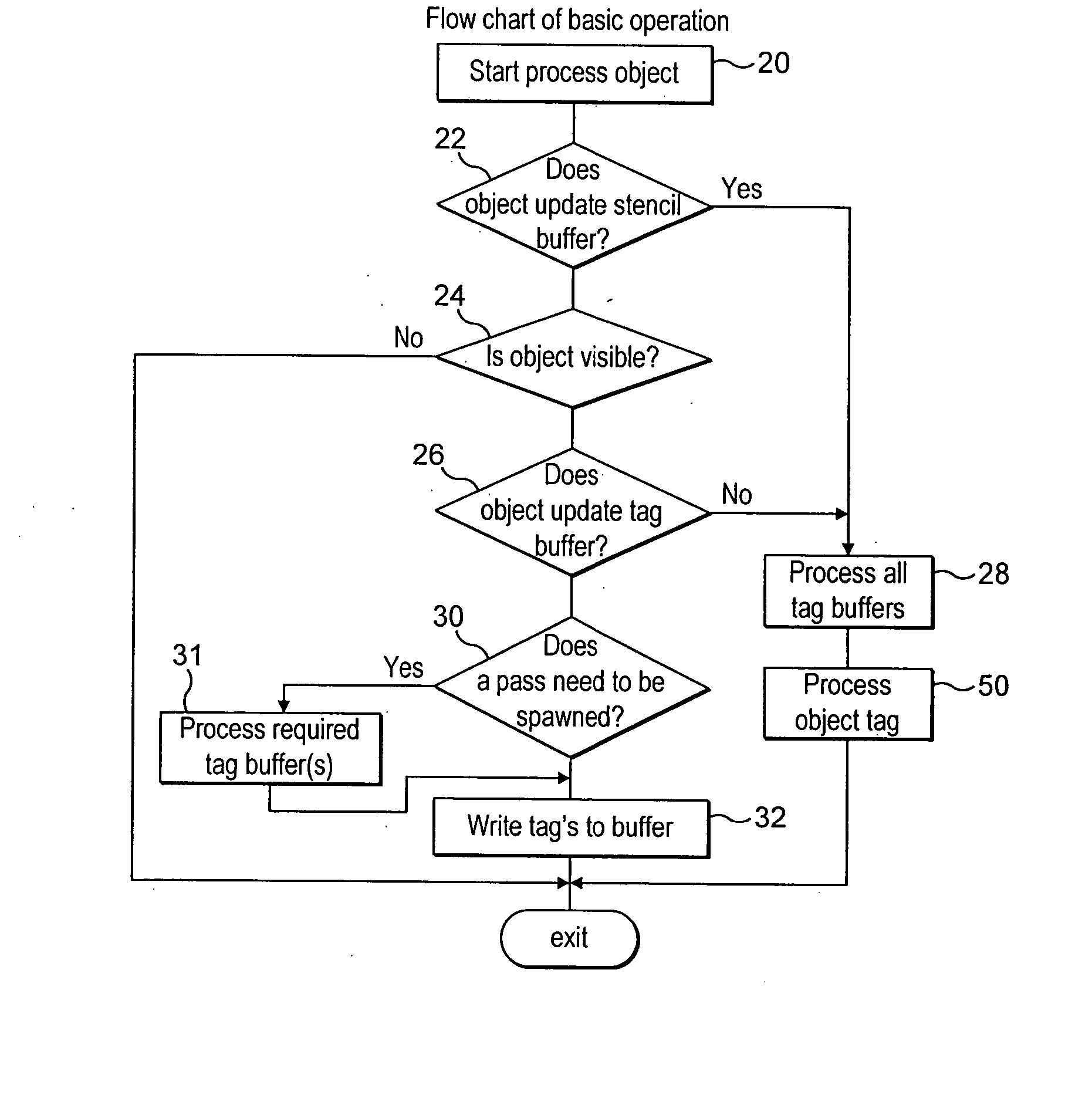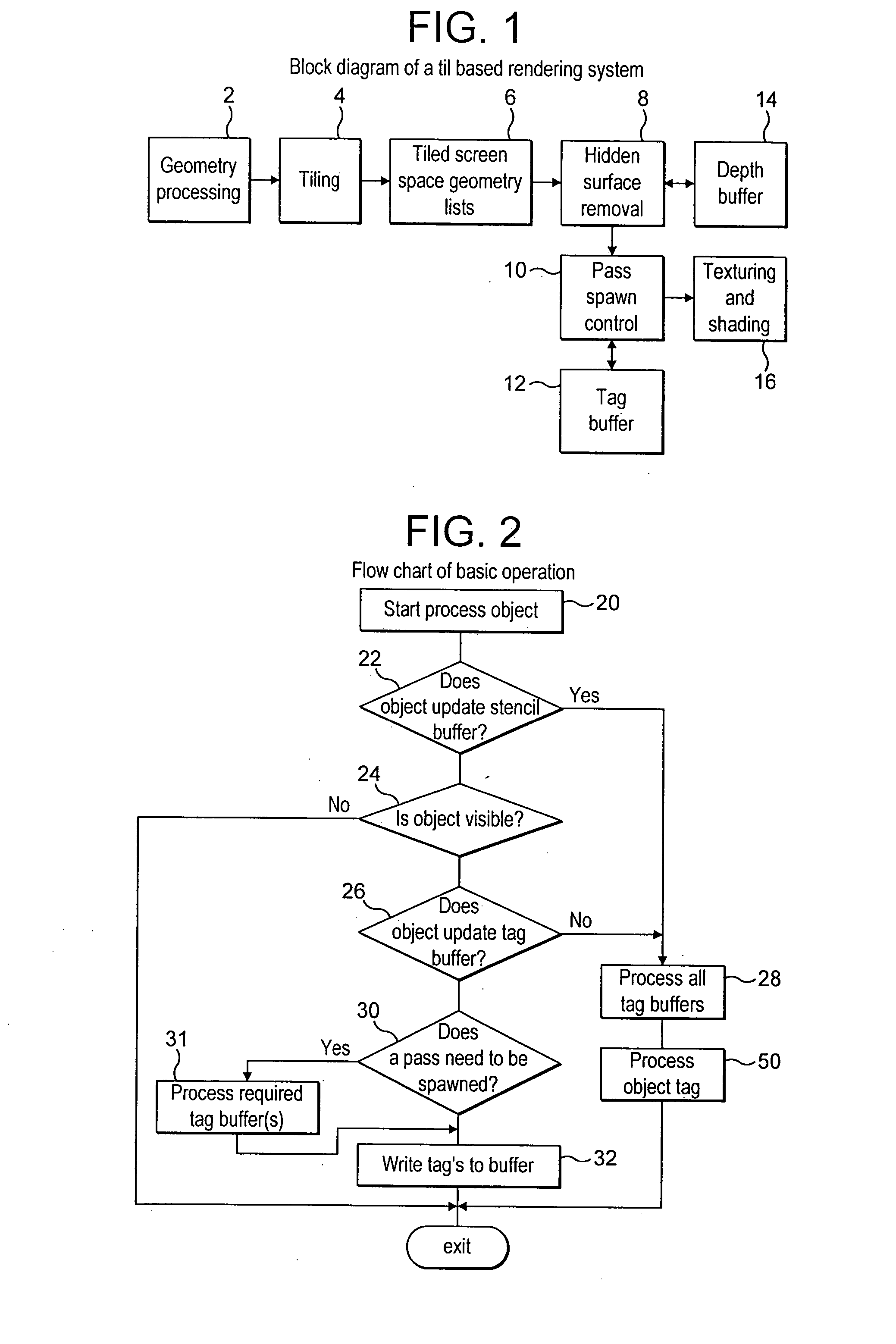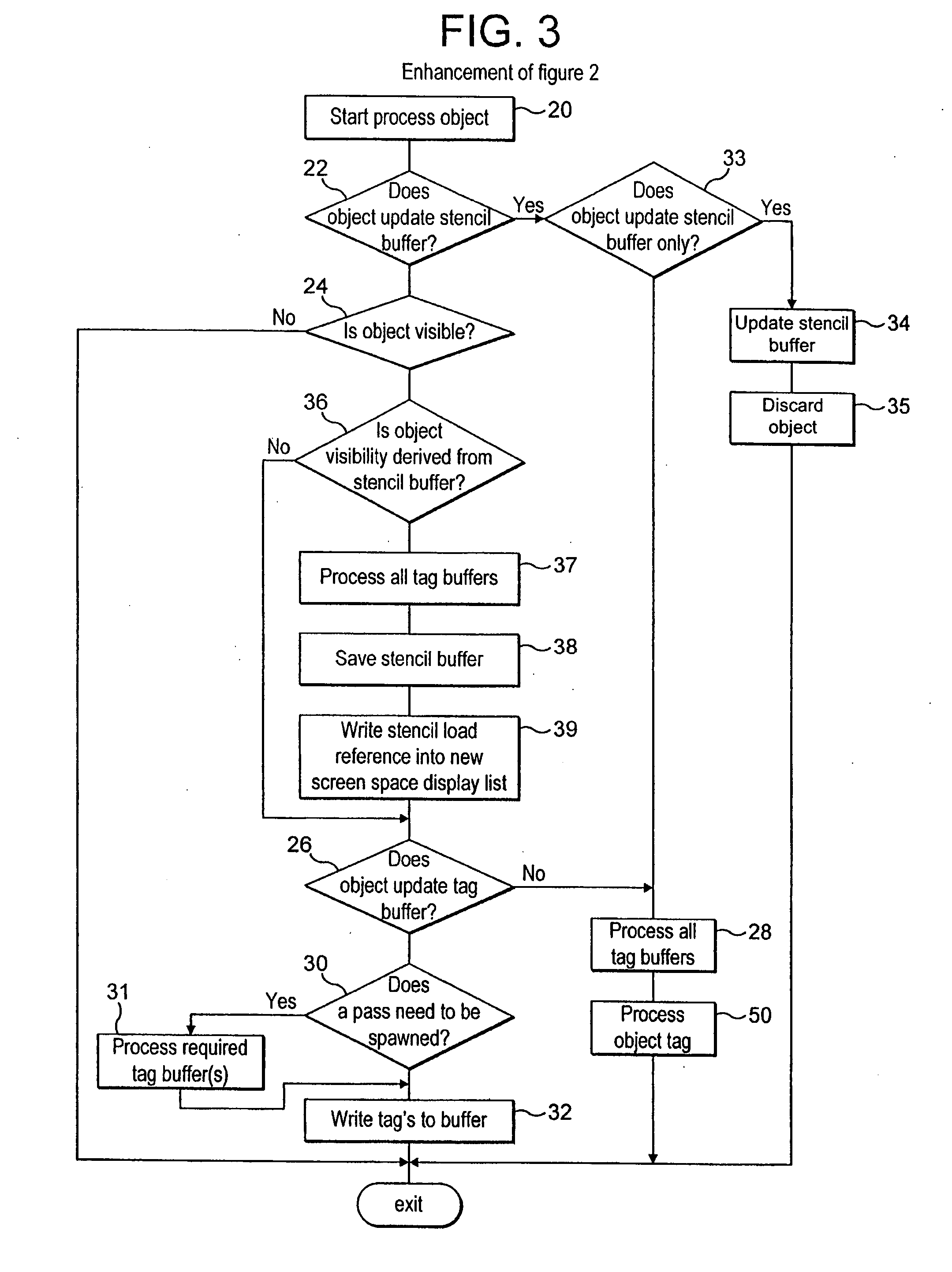Parameter compaction in tile based rendering device
a tile-based rendering and parameter compaction technology, applied in the field of 3d computer graphics systems, can solve the problems of requiring memory allocation, the entire memory used by a scene cannot be freed until, etc., and achieve the effect of improving the amount of memory freed, reducing the probability of a memory block successfully being freed by a parameter compaction pass, and consuming a large quantity of memory
- Summary
- Abstract
- Description
- Claims
- Application Information
AI Technical Summary
Benefits of technology
Problems solved by technology
Method used
Image
Examples
Embodiment Construction
[0028] It should be noted that the described embodiment makes the following assumptions about the manner in which memory is managed, [0029] Memory for object. pointers is allocated from separate memory blocks to object data. [0030] Pointer memory blocks are allocated per tile as apposed to per macro tile.
[0031]FIG. 2 illustrates the basic algorithm used to determine if an object is required and when the tag buffer should be processed. At 22 a determination is made as whether or not the object updates the stencil buffer, if it does, based on rule 3 above, then all tag buffers are processed at 28 and the object itself is processed at 50 before exiting.
[0032] If the object does not update the stencil buffer then the visibility of the object is determined at 24, if the object is not visible the algorithm exits. If the object is visible then it is determined at 26 if the object updates the tag buffer, if it does not then, in accordance with rule 4 above all tag buffers are processed at...
PUM
 Login to View More
Login to View More Abstract
Description
Claims
Application Information
 Login to View More
Login to View More - R&D
- Intellectual Property
- Life Sciences
- Materials
- Tech Scout
- Unparalleled Data Quality
- Higher Quality Content
- 60% Fewer Hallucinations
Browse by: Latest US Patents, China's latest patents, Technical Efficacy Thesaurus, Application Domain, Technology Topic, Popular Technical Reports.
© 2025 PatSnap. All rights reserved.Legal|Privacy policy|Modern Slavery Act Transparency Statement|Sitemap|About US| Contact US: help@patsnap.com



